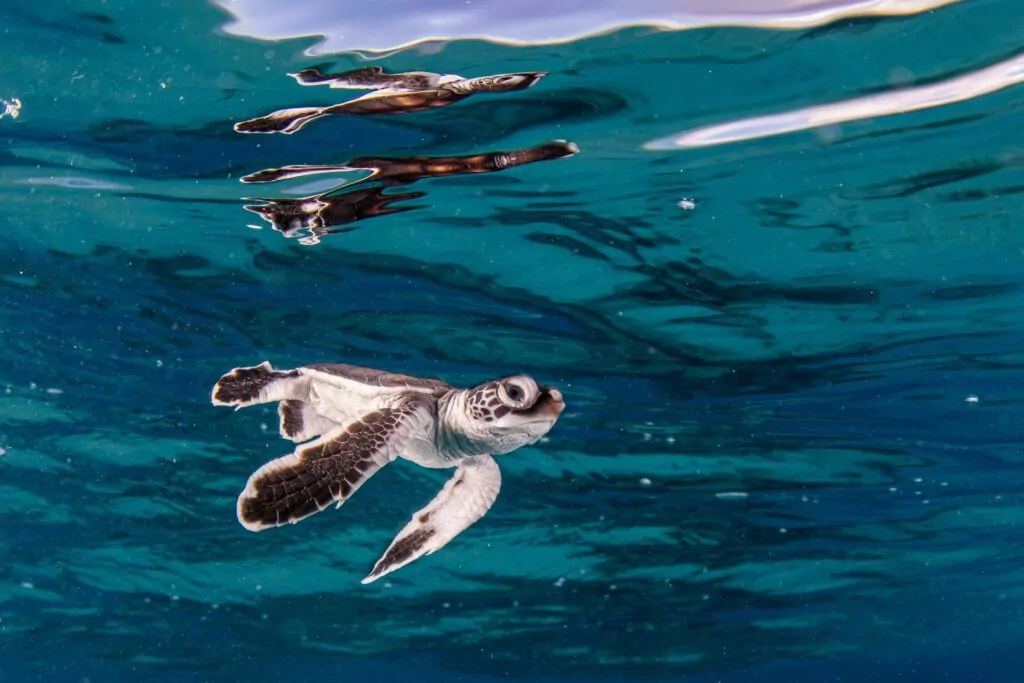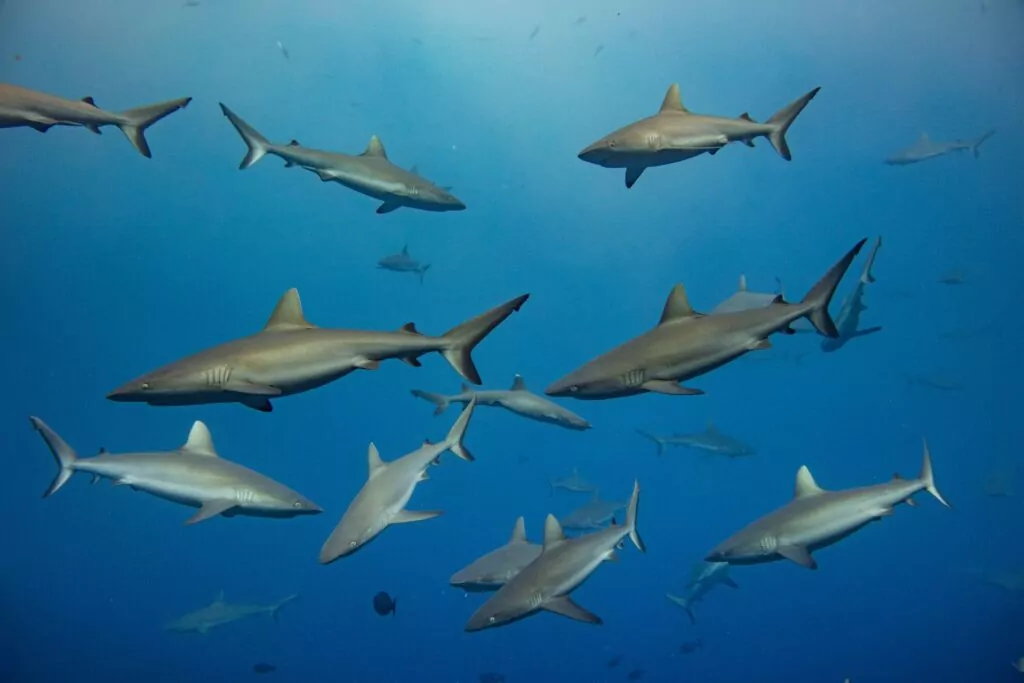Fix today. Protect forever.
Secure your devices with the #1 malware removal and protection software
The first new marine protected area (MPA) of 2025 has been announced in the Pacific Ocean Republic of the Marshall Islands to protect what is said to be a huge shark population and the nation’s largest green turtle nesting colony.
The MPA or national marine sanctuary will cover two remote atolls spanning an area of 48,000sq km surrounding the country’s northernmost islands, Bikar and Bokak.

The islands are uninhabited and described by the National Geographic Pristine Seas, which has been heavily involved in providing the data on which the MPA is based, as “two of the most pristine ecosystems in the Pacific Ocean”. The atolls are to be fully protected from fishing.
The Marshall Islands is providing the protection as part of a conservation approach called “look towards the future” or Reimaanlok, based on cultural insights and traditional knowledge. The idea is that coastal communities work together to design their own resource-management plans for sustainable and equitable use of local terrestrial and marine resources.

“The ocean as our ancestors knew it is vanishing,” said Marshall Islands president Dr Hilda Heine. “Without sustainable ocean ecosystems, our economy, stability and cultural identity will collapse.
“The only way to continue benefiting from the ocean’s treasures is to protect it. I am proud of our country’s first marine sanctuary, which certainly won’t be its last.”


“The ocean is life,” said Glen Joseph, director of the Marshall Islands Marine Resources Authority (MIMRA). “The world’s ocean is being degraded, but we are able to bring part of it back by recognising that protection and food production are not mutually exclusive.
“Safeguarding areas of high biodiversity delivers benefits to local communities who rely on fish and other aspects of a healthy environment. Our future depends on protecting our ocean.”
During an expedition to Bikar and Bokak in 2023, Pristine Seas and MIMRA gathered data about marine life from the surface to as deep as 2,340m, from lagoons and coral reefs to far offshore, as reported at the time on Divernet.

The team of scientists and film-makers used visual scuba surveys of coral reefs and open-water environments; dropped cameras to the seabed; counted and identified seabirds; tested genetic material found in the water; and explored little-known deeper areas using a submersible.
“Bikar and Bokak’s coral reefs are a time machine, like diving in the ocean of 1,000 years ago,” said Enric Sala, National Geographic explorer in residence and founder of Pristine Seas. “In these remote atolls, we saw the healthiest coral, giant clam and reef fish populations in the central and western Pacific. They are our best baselines for what the ocean could look like if we truly let it be.”

Working with local researchers and government officials, the team conducted 452 dives around Bikar and Bokak as well as Bikini and Rongerik atolls, sharing their scientific report with decision-makers to inform the Reimaanlok.
They noted that Bikar and Bokak harboured the largest green turtle nesting and seabird colonies in the Marshall Islands; had the highest coral cover and giant clam densities in the central and western Pacific; displayed high coral resilience to global warming; and had the highest reef-fish biomass in the tropical Pacific Ocean.

The area also featured an abundance of vulnerable species such as large grouper, Napoleon wrasse and bumphead parrotfish; rare fish spawning aggregations and mating sharks; and deep-sea communities with potentially new species of fish and invertebrates and many sharks.


Pristine Seas says that Bikar and Bokak stand in contrast to Bikini Atoll, used as a nuclear test site after WW2. At MIMRA’s request, Pristine Seas has studied the atoll to help the Marshall Islands establish its first long-term monitoring sites, using standard data collection methodologies with Rongerik Atoll as an unbombed reference site.
Since 2008, National Geographic Pristine Seas says it has helped to establish 29 of the world’s largest MPAs, covering a total of 6.8 million sq km – more than twice the size of India.
Also on Divernet: PRISTINE SEAS DIVES BIKINI + 3 OTHER ATOLLS, PRISTINE SEAS KICKS OFF 5-YEAR PACIFIC VENTURE, WORLD’S BIGGEST CORAL DISCOVERED IN SOLOMONS, PRISTINE SEAS EXPLORES LESSER-KNOWN PALAU
Fix today. Protect forever.
Secure your devices with the #1 malware removal and protection software
The Marshall Islands has officially established its first Marine Protected Area (MPA), marking a significant step towards conservation and preservation of its marine resources. The new MPA, named Time-machine, covers a vast area of pristine coral reefs, mangroves, and marine habitats that are crucial for the health of the region’s marine ecosystems.
The establishment of Time-machine is not just a milestone for the Marshall Islands, but also for the global conservation community. As one of the most vulnerable nations to climate change and rising sea levels, the Marshall Islands has been at the forefront of advocating for stronger measures to protect its marine environment.
By creating this MPA, the Marshall Islands is not only safeguarding its marine biodiversity, but also ensuring the sustainability of its fisheries and the livelihoods of its people. The Time-machine MPA will serve as a sanctuary for endangered species, a nursery for marine life, and a buffer against the impacts of climate change.
This groundbreaking initiative showcases the Marshall Islands’ commitment to sustainable development and environmental stewardship. It is a testament to the power of collective action and the importance of preserving our natural heritage for future generations. Time-machine is not just a name, but a symbol of hope and resilience in the face of environmental challenges.
Tags:
- Time-machine
- Marshall Islands
- MPA
- Marine Protected Area
- Conservation
- Environmental news
- Pacific Ocean
- Biodiversity
- Sustainable development
- Marine conservation efforts
#Timemachine #Marshall #Islands #MPA
Leave a Reply
You must be logged in to post a comment.